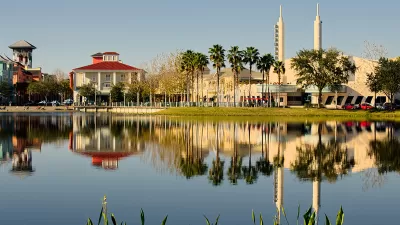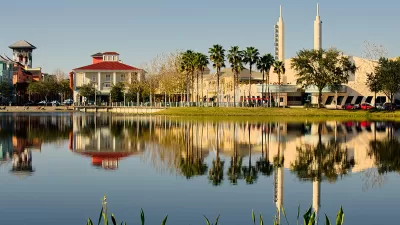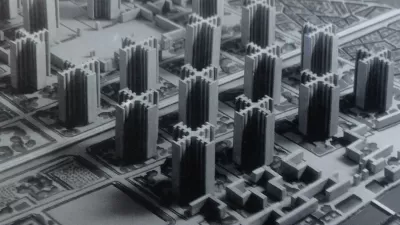Disney's efforts to make a quaint American town both failed and succeeded in ways few could have predicted.

Walt Disney's ambitions to build a perfect town were foiled in part by his death from lung cancer shortly after announcing his plan. Years later, Disney CEO, Michael Eisner, began work on what would become Celebration, Florida. "The town was developed by Disney as an antidote to the isolation of the suburbs," The Economist reports. It would be built with a sense of place at a human scale, "This community would have 20,000 residents, a central business district and futuristic public transport. Cars and lorries would be hidden away underground," continues the article..
Unfortunately, the town was unable to blossom into, "…a charming mid-Atlantic city, such as Savannah, Georgia or Charleston, South Carolina." The Economist cites a number of reasons for the town's relative level of success. In particular, the designers seem to have had different desires and interests than did the people the development attracted. The Economist notes that parks, which are no longer run by Disney, now are off limits to non-residents to the point where, "Sitting on a park bench is considered trespassing." A progressive public school designed specifically for the town did not last long there or win the hearts of the residents. "It proved a disaster. Kids slacked off. Without test scores, parents were unable to track their children’s progress." Still, with all its failings the town continues to attract homebuyers willing to pay a decided premium over the homes in the surrounding area. It seems that even with a downtown that never brought the business that the designers hoped for continues to draw residents.
FULL STORY: What Disney’s city of the future, built to look like the past, says about the present

Maui's Vacation Rental Debate Turns Ugly
Verbal attacks, misinformation campaigns and fistfights plague a high-stakes debate to convert thousands of vacation rentals into long-term housing.

Planetizen Federal Action Tracker
A weekly monitor of how Trump’s orders and actions are impacting planners and planning in America.

San Francisco Suspends Traffic Calming Amidst Record Deaths
Citing “a challenging fiscal landscape,” the city will cease the program on the heels of 42 traffic deaths, including 24 pedestrians.

Defunct Pittsburgh Power Plant to Become Residential Tower
A decommissioned steam heat plant will be redeveloped into almost 100 affordable housing units.

Trump Prompts Restructuring of Transportation Research Board in “Unprecedented Overreach”
The TRB has eliminated more than half of its committees including those focused on climate, equity, and cities.

Amtrak Rolls Out New Orleans to Alabama “Mardi Gras” Train
The new service will operate morning and evening departures between Mobile and New Orleans.
Urban Design for Planners 1: Software Tools
This six-course series explores essential urban design concepts using open source software and equips planners with the tools they need to participate fully in the urban design process.
Planning for Universal Design
Learn the tools for implementing Universal Design in planning regulations.
Heyer Gruel & Associates PA
JM Goldson LLC
Custer County Colorado
City of Camden Redevelopment Agency
City of Astoria
Transportation Research & Education Center (TREC) at Portland State University
Jefferson Parish Government
Camden Redevelopment Agency
City of Claremont




























